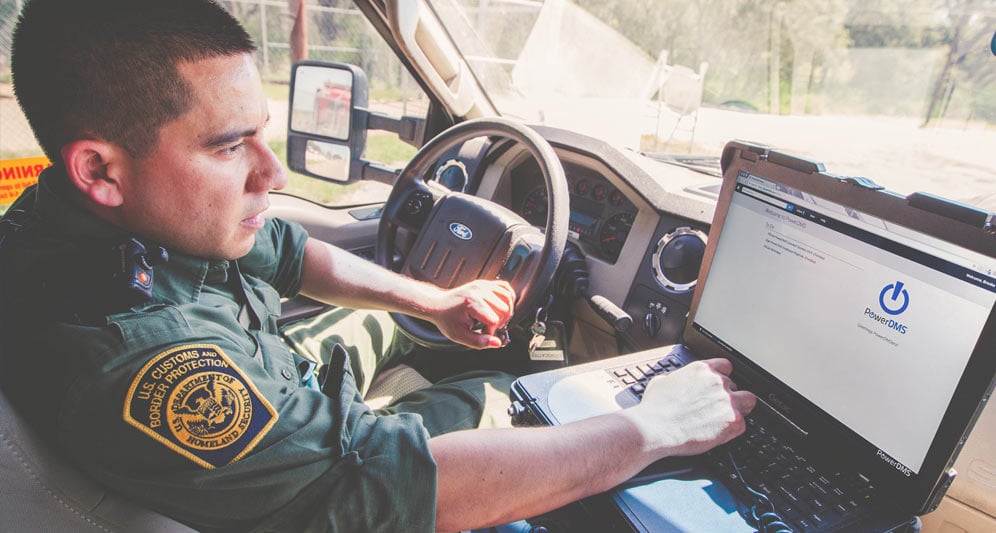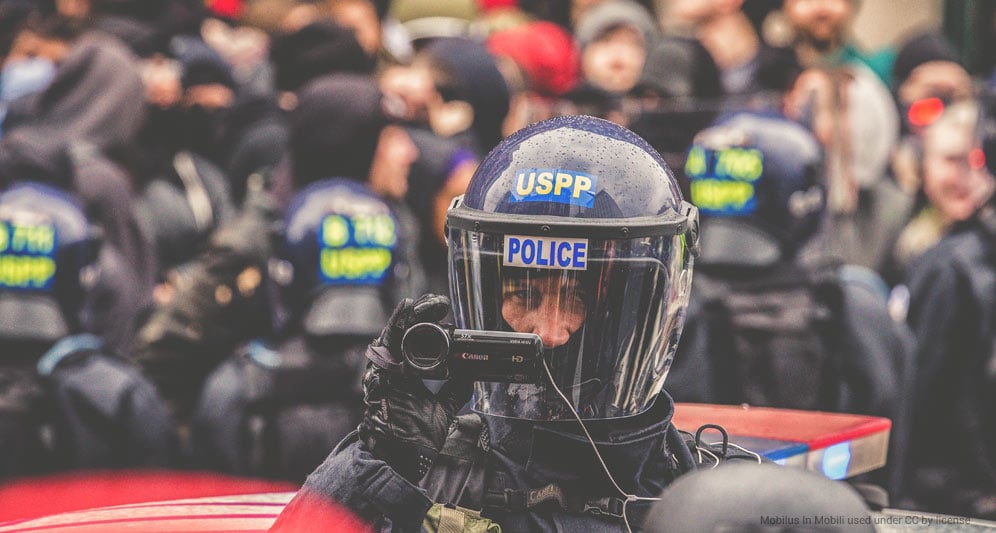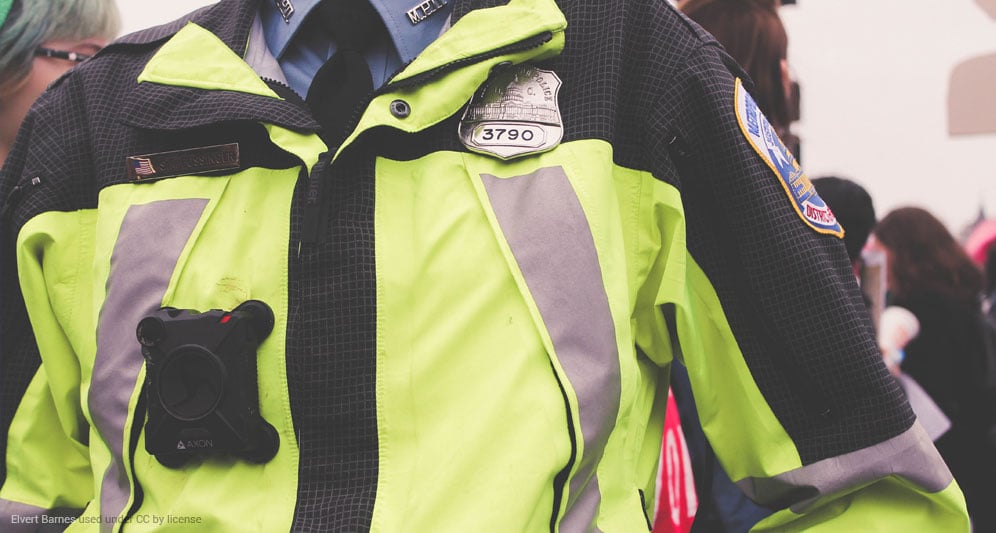1. Start with a balanced philosophy
Marlow points out two different aspects of creating a balanced law enforcement body camera policy.
One is taking into account the interests of the officers who will be wearing the cameras and the concerns of the public who will be captured on the cameras.
The other is balancing the need for greater police accountability and transparency with the need to protect individual privacy.
He says agencies must find the “sweet spot” between the interests of police and the public they serve. Law enforcement leaders must commit a balanced philosophy before they start writing the body camera.
2. Consult subject matter experts
In the years before launching their body camera program, Parker PD’s leaders consulted officers, other agencies, attorneys, research studies, experts from the Police Executive Research Forum and DA’s office, and more.
“What we knew going in is that policy was key before testing and deploying body worn cameras,” Lt. Peters says. “Even a pilot program needs to have a policy written before we could put them out into the field.”
However, even after his research, Peters realized the policy was still missing a piece. He wasn’t sure how to handle the issue of body cameras and privacy.
So he approached Marlow at a conference and asked if the ACLU would be willing to help. Marlow said he was excited to work with Parker PD to help craft working body camera policies.
Peters stresses the need to include people from various areas of expertise when crafting body camera policy. “Do not create your policy in a vacuum,” he says.
3. Create a foundational first draft
Of course, after you set your philosophy and get input, you have to draft a policy.
Your first draft won’t be perfect, but Peters suggests getting the policy as close as you can before sending it around to experts to look over. Do your best to cover the practical and philosophical considerations into your policy.
This will provide a good starting point for revisions and help you reach a finalized version more quickly.
4. Utilize expert insight to hone policy
Once you have the first draft, collaborate with your chosen subject matter experts to address any problems you may have overlooked.
Peters says collaboration with the ACLU drastically improved the privacy part of Parker PD’s body camera policy.
Police officers don’t always have the expertise to know how to handle the complex, technical aspects of high-liability things like body cameras, he says.
Law enforcement officers can combine their on-the-ground experience with the expertise of outside organizations to craft an effective body camera.
The collaborators may not agree on every issue. But they can meet in the middle and create a strong policy that works for everyone.
5. Disseminate policy and train your staff
Your body camera program will never work if you don’t get buy-in from all your officers. Peters points out that body cameras are a significant change to how officers do their jobs.
So officers need to be involved in every step of the way. To get officers to buy-in, Parker PD sent out policies, asked for officer feedback, held informational meetings, and created a committee of officers to guide the body camera pilot program.
For the committee, Parker chose the officers who had been most critical of body cameras. The department used the feedback from the committee to further revise policies, which helped get buy-in from everyone in the department.
Once they had a finalized policy, Parker PD used PowerDMS to send it out to every officer and make sure everyone read and signed off on the policy.
They also developed a good training schedule to make sure every officer got the information they needed to effectively use body cameras.
6. Continually improve
Even the most robust body camera policy will need to change and evolve. Law enforcement leadership should regularly review and revise the policy as body camera technology changes and officers use body cameras in the field.
“When you put a policy out into the field, you’re going to learn new things that you could not anticipate,” Marlow says.
Every agency will need to adjust policies to address those new challenges, he says.
Peters says that Parker PD is regularly updating and improving their policies, especially those that deal with technology. “Policies need to be regularly questioned to ensure they are still relevant,” he says.

Questions to consider
When/where can you shut the camera off?
Marlow says the ACLU suggests that officers should turn on cameras at the inception of any law enforcement or investigative encounter.
The officer should only turn the camera off at the very end of the encounter when they have left the scene. Marlow says making this requirement a clear part of body camera policy protects officers making judgment calls in the field.
The officers can point to the body camera to show why they turned cameras on or off when they did.
Parker PD follows to this rule. Their body camera policy requires officers to turn on their body camera “at the first reasonable opportunity to do so” in any encounter.
However, the policy specifies situations where officers can turn cameras off if asked. This includes “consensual encounters” in places where people have “a reasonable expectation of privacy."
It also applies to taping crime victims and individuals wanting to report a crime anonymously.
In all cases, the officer should capture the interaction where the person asks them not to record. And if an officer doesn’t record an encounter, they must document the reason they didn’t record.
Will officers be allowed to view footage before writing an incident report?
Parker PD policy lets officers view body camera footage for routine police work and reports.
But it prohibits officers from viewing footage if they were involved in a critical incident or if the officer is suspected of wrongdoing.
Peters explains that getting “the organic statement without any other outside influence” is an essential part of understanding the officer’s perception of what happened.
Marlow says that letting officers immediately view footage can hurt their testimony in the long run.

“If officer views a video, you’re going to get the officer’s report testifying as to what the officer saw in the video, not what the officer experienced on the scene,” he says. “Those may be two different things.”
How will you store and release footage?
body cameras create a lot of data, and not all of it will be necessary for investigations or open cases. Keeping unnecessary footage for too long can threaten the privacy of those caught on tape.
Parker PD retains unflagged footage for a minimum of a year and a maximum of three years. Department policy prohibits anyone from tampering with the video other than deleting old, unflagged footage.
Parker PD’s footage is subject to public records requests, but the department uses redaction software to protect the privacy of the people in the videos.
The future power (and risk) of body-worn cameras
The capabilities of body camera hardware and software will certainly change over the years. But Marlow points out that not every update is helpful.
“An advance in technology is not always an advance for the public, and it’s not always an advance for law enforcement,” he says. “Sometimes, advances in technology can present drawbacks.”
Facial recognition software is one of the developments that may pose privacy issues. The software could allow agencies to track where people are and create a database of people in the community, even if those people haven’t been involved with crimes.
Forward thinking departments should take this into account in body camera. For example, Parker PD’s policy prohibits the use of biometric technology to search video files.
Good policy protects everyone
No matter how they change in the future, body cameras are here to stay. And no matter how they change in the future, law enforcement agencies must work with experts to create and update good policy to guide their use.
As Peters points out, “Policy writing today must be a collaborative effort with all stakeholders and subject matter experts, or it lacks legitimacy.”
Good, balanced policy protects both the officer, the community, and the agency. Not only from litigious threats but bodily harm as well. That’s why it’s essential to be always training your staff as these technologies evolve
Developing, distributing, and training officers on body camera policy is part of serving and protecting the public.
As Peters says, “Sound policy today will protect your officers and your agency tomorrow.”
A law enforcement body camera policy is just one of the 12 crucial law enforcement policies every agency needs to protect its officers, guard its reputation, and minimize liability.



